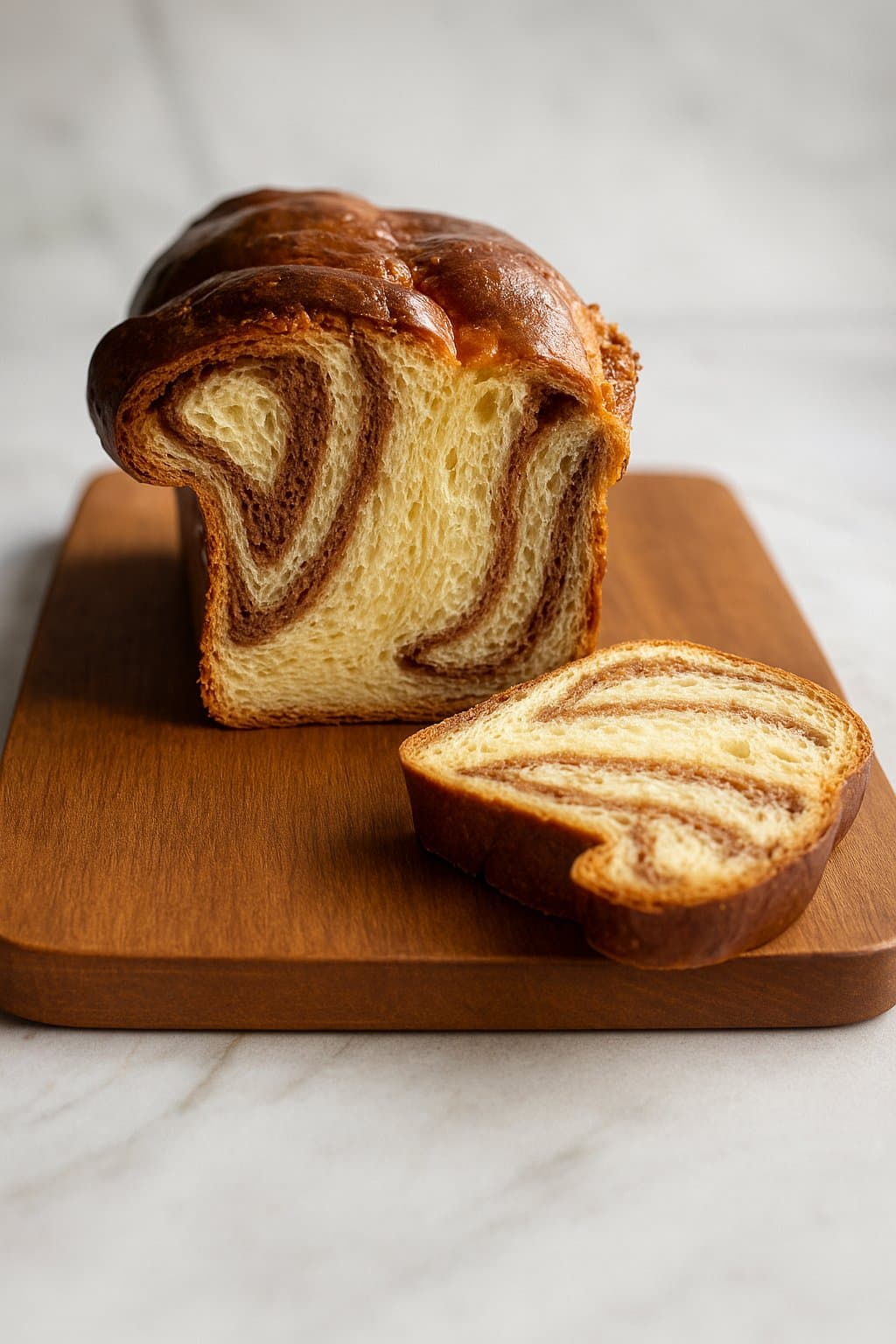Cozonac: The Festive Sweet Bread That Rose Through Empires and Time

Cozonac: The Festive Sweet Bread That Rose Through Empires and Time
Around the World in 80 Bakes: Stop #19 — Romania
With its golden crust, pillowy crumb, and spirals of cocoa and walnut, Cozonac is the kind of bake that turns heads on a table — and stirs hearts at family gatherings. For generations of Romanians, this rich, sweet bread has been more than a festive treat. It is a symbol of home, a keeper of memories, and a link to a shared past.
But Cozonac’s story doesn’t start in a modern Romanian kitchen. It winds its way through empires, monasteries, village ovens, and cultural exchanges that span centuries.
From Empire to Hearth: The Crossroads of Flavour
Cozonac likely traces its earliest influences to the Ottoman Empire, which held sway over large parts of southeastern Europe from the 14th to the 19th centuries — including parts of present-day Romania. The Ottomans brought with them not only spices and dried fruits but also the tradition of enriched breads — soft, slightly sweet loaves made with eggs, milk, and butter, often flavoured with rosewater, nuts, or dried fruits.
At the same time, Romania — a land of wheat fields, walnut groves, and honey — had its own baking culture rooted in rural village life and monastic traditions. Orthodox Christian holidays such as Easter and Christmas were (and still are) marked by bountiful feasts, where bread is not merely food but a spiritual offering.
Cozonac emerged at the intersection of these worlds — a fusion of regional abundance and foreign inspiration, slowly transformed into a national icon. Over time, the fillings evolved to reflect local harvests: ground walnuts, raisins soaked in rum, homemade cocoa paste, and sometimes candied orange peel or Turkish delight.
A Celebration of Labour and Love
By the 18th and 19th centuries, Cozonac had become a deeply entrenched tradition in Romanian homes — especially in Wallachia, Moldova, and Transylvania. It wasn’t just the bread of celebration, but the bread of communal effort. Entire families would gather to bake dozens of loaves at once, especially in rural areas where wood-fired ovens still held pride of place.
The process was intensive: eggs were separated, milk warmed, walnuts cracked and ground by hand. Kneading could take half an hour or more. Then the loaves were shaped, braided, or rolled with care, and left to rise slowly — often under embroidered cloths for good luck.
The symbolism of Cozonac was also tied to hospitality and abundance. In many villages, it was tradition to offer a slice of Cozonac and a glass of plum brandy (țuică) to any guest who visited during the holidays. A well-risen Cozonac was a mark of a good homemaker, and a failed one could invite quiet superstition — hence the saying:
“Cozonacul iese bine doar dacă îl faci cu sufletul ușor.”
“Cozonac will only rise if you make it with a light heart.”
More Than a Romanian Story
Although Cozonac is most closely associated with Romania, its roots and relatives can be found throughout the region. In Bulgaria, it’s known as Kozunak. In Greece, the Easter bread Tsoureki shares similar shaping but is flavoured with spices like mahlepi and mastic. The idea of an enriched, sweetened bread swirled with nuts or dried fruits appears in many cultures — from Italy’s panettone to Ukraine’s paskha.
Yet Cozonac remains uniquely Romanian in its flavour, method, and emotional resonance. It is one of those bakes that transcends mere recipe: it is ritual, memory, and message.
Cozonac Today: Still Rising
In modern Romanian households, Cozonac continues to be baked for Christmas, Easter, weddings, baptisms, and even funerals. Some families have kept the traditional fillings alive, while others embrace chocolate spreads, dried cranberries, or even Nutella swirls. Supermarkets stock pre-packaged versions, but most Romanians agree — nothing beats the homemade kind.
Among Romanians living abroad, Cozonac has become a way to stay rooted. It’s not uncommon to find Romanian expats baking it in London flats, New York apartments, or even student kitchens in Finland — the scent of citrus and walnuts bridging distance and time.
Cozonac is a bread that has travelled — through empires, borders, and generations — but its spirit remains unchanged. In every slice lies a story: of hands kneading dough in quiet kitchens, of families gathering around old wooden tables, of a people who made celebration a part of their identity.
As Bake No. 19 in our journey, Cozonac reminds us that the simplest ingredients — flour, eggs, sugar, nuts — can rise into something far greater when mixed with memory and meaning.
Tempted by those swirls? 🌀
Roll up your sleeves and try baking your own Cozonac — here’s the full recipe!
Share your thoughts
Did you find this history article interesting? Rate it below and let others know!